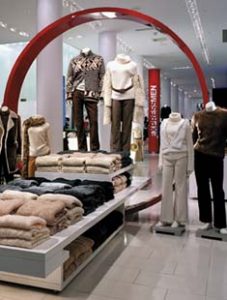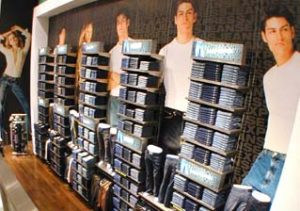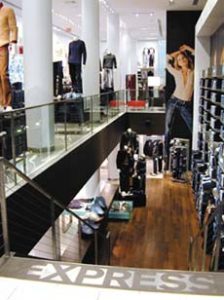Express is no longer just for the 20-something, urban, fashion-oriented woman.
In 2001, Express'parent company, Limited Brands (Columbus, Ohio), began transitioning its Structure men's chain to Express Men's by building new “dual-gender” units (that combine the men's apparel with traditional Express stores) and converting some existing Structure stores into Express Men's.
According to Gene Torchia, president of Limited Brands Store Design & Construction, the imagery in the Express brand was much stronger than in Structure's, so merging the two companies was a way to create a “master brand.” Revamping the collection under the Express name is an attempt to elevate the men's retailer's status as a trendy design-oriented brand.
A dual-gender concept will henceforth showcase the unified Express brand. Because women purchase a good deal of men's apparel, Limited Brands felt building dual-gender stores made sense. The concept was first tested at Easton Town Center's Fashion District (Columbus, Ohio) last fall. It is now getting a much more demanding test in New York's high-profile, gritty-but-sophisticated SoHo neighborhood. The two-level, 14,000-square-foot flagship at 584 Broadway, between Prince and Houston, is just one of the recent stores targeted to upgrade the perceived value of the brand.
“When Express started, it was about the abundance and power of product in 50 colors,” says Patrick Lehman, the division's vp, visual presentation. “This abundance of color is not something you use at a higher level of clothing.”
Advertisement
Because the Express brand and clothing lines have become more urban, innovative and sexy over the years, designers wanted an environment that was as sophisticated as the clothing. “You can put casual clothing in a sophisticated environment,” notes Lehman, “but when you put sophisticated clothing in a casual environment, it looks out of place.”
Express began in the early 90s with a French-motif store atmosphere, with artistic wallcoverings and loud printed materials. It evolved into a white, modern and clean design four years ago. Late in 2000, Leslie Wexner, founder, chairman and ceo of Limited Brands, decided it was time for Express to make a new statement and to push the design and the business to the next level.
Working with Yabu Pushelberg (the Toronto- and New York-based design firm), the Limited Brands team came up with a new concept, using much of the white package design but with a hipper feel. “We tried to push the flavor of the brand as well as the architecture of the design to be a cohesive unit,” says Gregory Schlegel, director of design, Limited Brands, “and more modern in terms of the floor fixtures and finishes. It's still a white design in terms of perimeter cabinets and fixtures, but we restylized every piece that was in the old package and started fresh again.”
To fit in with the period loft architecture of SoHo, designers put a huge penetration in the middle of the store to get circulation upstairs and downstairs, and elevated ceilings to 16 feet. A stainless-steel railing and glass staircase mark the entry to the lower level men's area. The passageway between the two floors features a 20-by-35-foot power wall of denim for both sexes. A large casework cabinet downstairs is part of the denim wall's landing, in which drawers pull out for visual buildups.
“The power wall is used as the primary push for the company's denim department,” says Schlegel. “We used huge supergraphics on the back of the cabinets, and interspersed jeans in an abundance of sizes and choices. In every new location, the denim shop is designed to be the bridge of dual-gender.”
Lehman feels the store has a heightened visual presence. “We use framed photography instead of paper banners,” he says. “Instead of having giant, full-bleed posters, we have a framed fine-arts approach to lift the level of sophistication in ready-to-wear.” In the jeans area, supergraphics were chosen to help separate the casual from the higher-end clothing, and to create a hierarchy of value.
Advertisement
This denim shop was redesigned to be a rugged and rawer concept, with reclaimed wood flooring and cabinet fixturing. Industrial metal-halide lighting gives a bluer cast to the area.
Mannequins are in abundance throughout the store – 45 in women's and 30 in men's. “Our clothing is fitted to emphasize a person's silhouette,” says Lehman. “We see ourselves as being a young person's first exposure to a higher level of clothing.”
A stainless-steel railing and glass staircase mark the entry to the lower level men's area. The denim shop was redesigned to be a rugged, more raw concept, with reclaimed wood flooring and cabinet fixturing. To provide the masculine feel for the dual-gender store, dark woods, wire-brushed pine and rich wood veneers were used to contrast with the white perimeter fixturing. Simon Cherry Photography, New York
Focal elements such as the large, signature red “O” and the text column moments were designed to introduce more color into the white palette. Red moments are in development to bring this bright color into the store's environment.
A glass-enclosed illuminated cashwrap glows in the women's department. The design team also has introduced rear-illuminated focal wall panels on which accessories can be displayed. “The illumination causes a nice sparkle effect with the product mix,” says Schlegel. “Men's utilizes the same type of system for its shirt wall, which is the big push along with denim.”
When adapting the same store design into a mall setting, Schlegel says all the elements will have to be reconfigured to fit into a smaller space and lower ceiling height. Limited Brands is currently rolling out the dual-gender concepts in new locations, choosing renovation based on the profitability of the store and how easily the two businesses can be melded into one setting. The majority of existing Structure units will also be converted into Express Men's. But in some mall locations, where Express and Structure are far apart, the retailer will keep two stores – an Express and an Express Men's.
Advertisement
“We are testing a market-based approach to converting Structure stand-alone stores to Express,” says Michael Weiss, president and ceo of Express. “The conversion includes changing the store front sign and certain architectural elements, combined with integrated marketing support. It's still very early, but we're pleased with the initial results.”
Weiss reports that by year-end, 46 dual-gender stores will be in operation. Brand conversion plans for 2003 will be based on evaluation of the fall season – what works and what doesn't. He sees it as a period of learning.
“Express has come a long way as a brand and in the store environment,” adds Lehman. “In our previous stores, there was no architectural presence at all, so the clothing gave the store its shape. Now the architecture has a real presence around the product, making for a better frame and overall picture.”
Client Design Team: Limited Brands Store Design & Construction, Columbus, Ohio – Gene Torchia, president, store design & construction; Dave Crawford, vp; Gregory Schlegel, director of design; Kerry Weber, director, construction; Debbie Rowe, senior designer; Steve Bohnert, project manager; Michelle January, purchasing manager; Leanne Mampieri, purchasing agent; Patrick Lehman, vp, visual presentation, Express
Outside Design Consultant: Yabu Pushelberg, Toronto and New York – Glenn Pushelberg, principal; Janis Chow, project manager; Alison McNeil, designer (design); MBH Architects, Alameda, Calif. (architectural consultant); Grenald Waldron, Narbeth, Pa. (lighting design)
Suppliers: Play Network, Redmond, Wash. (audio); Donghia Textiles, Beachwood, Ohio, Silver Threads, Plain City, Ohio (fabrics); Ontario Store Fixtures, Toronto (fixturing); Innovative Marble & Tile, Hauppauge, N.Y. (tile); Syracuse Commercial Floors, Colebrook, N.H. (wood flooring); Minima, Philadelphia, Lowenstein, Pompano Beach, Fla. (furniture); P R Group, Chicago (graphics); Capitol Lighting, Hartford, Conn. (lighting); Fusion Specialties, Broomfield, Colo., Carol Barnhart, New York (mannequins/forms); Holiday Foliage, San Diego, Circle Visual, New York (props/ decoratives); North American Signs, S. Bend, Ind. (signage); Maharam, Hauppauge, N.Y. (wallcoverings); Capitol City Awnings, Columbus, Ohio (awnings)
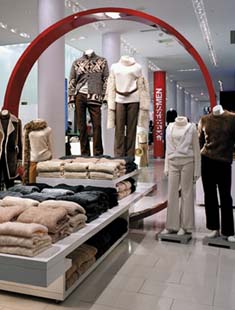
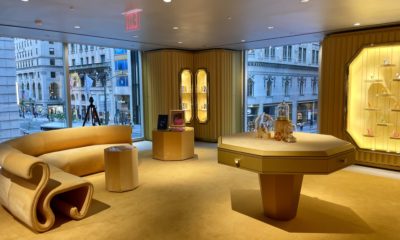
 Eric Feigenbaum1 week ago
Eric Feigenbaum1 week ago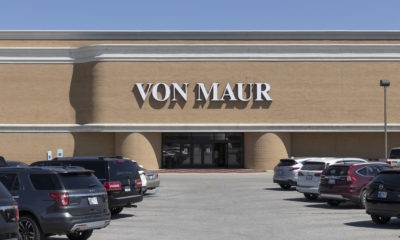
 Headlines7 days ago
Headlines7 days ago
 Headlines1 week ago
Headlines1 week ago
 Headlines2 weeks ago
Headlines2 weeks ago
 Designer Dozen2 weeks ago
Designer Dozen2 weeks ago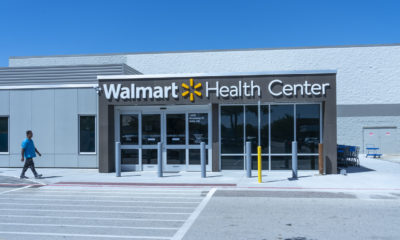
 Headlines1 week ago
Headlines1 week ago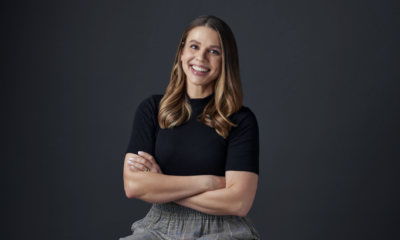
 Blogs & Perspectives1 week ago
Blogs & Perspectives1 week ago
